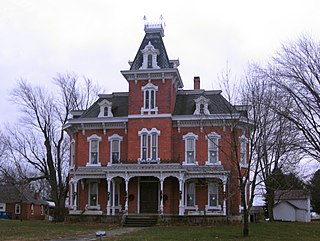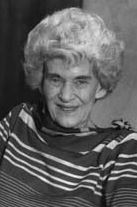
Philately is the study of postage stamps and postal history. It also refers to the collection and appreciation of stamps and other philatelic products. Philately involves more than just stamp collecting or the study of postage; it is possible to be a philatelist without owning any stamps. For instance, the stamps being studied may be very rare or reside only in museums.

Stamp collecting is the collecting of postage stamps and related objects. It is an area of philately, which is the study of stamps. It has been one of the world's most popular hobbies since the late nineteenth century with the rapid growth of the postal service, as a never-ending stream of new stamps was produced by countries that sought to advertise their distinctiveness through their stamps.

A postmark is a postal marking made on an envelope, parcel, postcard or the like, indicating the place, date and time that the item was delivered into the care of a postal service, or sometimes indicating where and when received or in transit. Modern postmarks are often applied simultaneously with the cancellation or killer that marks postage stamps as having been used. Sometimes a postmark alone is used to cancel stamps, and the two terms are often used interchangeably. Postmarks may be applied by handstamp or machine, using methods such as rollers or inkjets, while digital postmarks are a recent innovation.
A first day of issue cover or first day cover (FDC) is a postage stamp on a cover, postal card or stamped envelope franked on the first day the issue is authorized for use within the country or territory of the stamp-issuing authority. Sometimes the issue is made from a temporary or permanent foreign or overseas office. Covers that are postmarked at sea or their next port of call will carry a Paquebot postmark. There will usually be a first day of issue postmark, frequently a pictorial cancellation, indicating the city and date where the item was first issued, and "first day of issue" is often used to refer to this postmark. Depending on the policy of the nation issuing the stamp, official first day postmarks may sometimes be applied to covers weeks or months after the date indicated.

A postcard or post card is a piece of thick paper or thin cardboard, typically rectangular, intended for writing and mailing without an envelope. Non-rectangular shapes may also be used but are rare. There are novelty exceptions, such as wooden postcards, copper postcards sold in the Copper Country of the U.S. state of Michigan, and coconut "postcards" from tropical islands.

A cancellation is a postal marking applied on a postage stamp or postal stationery to deface the stamp and to prevent its reuse. Cancellations come in a huge variety of designs, shapes, sizes, and colors. Modern cancellations commonly include the date and post office location where the stamps were mailed, in addition to lines or bars designed to cover the stamp itself. The term "postmark" refers specifically to the part that contains the date and posting location, but the term is often used interchangeably with "cancellation" as it may serve that purpose. The portion of a cancellation that is designed to deface the stamp and does not contain writing is also called the "obliteration" or killer. Some stamps are issued pre-cancelled with a printed or stamped cancellation and do not need to have a cancellation added. Cancellations can affect the value of stamps to collectors, positively or negatively. Cancellations of some countries have been extensively studied by philatelists, and many stamp collectors and postal history collectors collect cancellations in addition to the stamps themselves.

Postal history is the study of postal systems and how they operate and, or, the study of the use of postage stamps and covers and associated postal artifacts illustrating historical episodes in the development of postal systems. The term is attributed to Robson Lowe, a professional philatelist, stamp dealer and stamp auctioneer, who made the first organised study of the subject in the 1930s and described philatelists as "students of science", but postal historians as "students of humanity". More precisely, philatelists describe postal history as the study of rates, routes, markings, and means.

Postage stamps and postal history of Great Britain surveys postal history from the United Kingdom and the postage stamps issued by that country and its various historical territories until the present day.

In philately, the term cover pertains to the outside of an envelope or package with an address, typically with postage stamps that have been cancelled and is a term generally used among stamp and postal history collectors. The term does not include the contents of the letter or package, although they may add interest to the item if still present. Cover collecting plays an important role in postal history as many covers bear stamps, postmarks and other markings along with names and addresses all of which help to place a cover at a given time and place in history.

James Alexander Mackay was a prolific Scottish writer and philatelist whose output of philatelic works was rivalled only by Fred Melville. He was described by John Holman, editor of the British Philatelic Bulletin, as a "philatelic writer without equal" but his reputation was damaged by a conviction for theft from the British Museum early in his career, which cost him his job there, and multiple accusations of plagiarism.

Deltiology is the study and collection of postcards. The word originated in 1945 from the collaboration of Professor Rendell Rhoades (1914-1976) of Ohio and colleagues at Ohio State University. A biographical sketch of Dr. Rhoades life by his wife Nancy, was provided to the Canadian Friends (Quaker) Historical Association in 1994. Dr. Rhoades had responded to a contest by Editor Bob Hendricks in Post Card Collectors Magazine to create a more scholarly name for the hobby of postcard collecting. 'Philocartist' was a term used in the early 1900s, possibly coined by the noted early philatelist Fred Melville in his 1903 publication 'The A.B.C. of Stamp Collecting'

Lyme Township is one of the nineteen townships of Huron County, Ohio, United States. As of the 2010 census the population of the township was 853, down from 968 at the 2000 census.
The Universal Ship Cancellation Society (USCS) is an international philatelic non-profit organization with an interest in postmarks and covers from all maritime services. Founded in 1932, the USCS is one of the oldest specialized postal history societies in the world and the only organization in the United States devoted to navy and maritime covers.
David Richard Beech MBE was the curator of the British Library Philatelic Collections from 1983–2013. He is a fellow and past-president of the Royal Philatelic Society London (RPSL). In 2013, it was announced that Beech was to receive the Smithsonian Philatelic Achievement Award for outstanding lifetime accomplishments in the field of philately.

Button collecting may refer to the collecting of various types of buttons. This article refers to the collecting of clothing buttons.
John Richard Holman FRPSL was the editor of the British Philatelic Bulletin from 1988 to 2010 and a fellow of the Royal Philatelic Society London.

The British Library Philatelic Collections is the national philatelic collection of the United Kingdom with over 8 million items from around the world. It was established in 1891 as part of the British Museum Library, later to become the British Library, with the collection of Thomas Tapling. In addition to bequests and continuing donations, the library received consistent deposits by the Crown Agency and has become a primary research collection for British Empire and international history. The collections contain a wide range of artefacts in addition to postage stamps, from newspaper stamps to a press used to print the first British postage stamps.

In aerophilately, a branch of philately, a first flight cover, also known by the acronym FFC, is mail that has been carried on an inaugural flight of an airline, route, or aircraft, normally postmarked with the date of the flight often of the arrival destination proving it was actually carried on the aircraft and may have a special flight cachet and/or an arrival postmark. Because many first flight covers are essentially made as collectables they can be considered philatelic mail though others consider them to be postal history.

Marion Gilmore also Marian Gilmore and Mion Hulse was an American muralist and painter from Iowa. She was also an accomplished cellist. In the 1930s, she won two federal commissions to complete post office murals for the Public Works Art Project of the Treasury Department. Her work is representative of the Ashcan school and Social Realism art movements of American Art.
Cheryl R. Ganz, FRPSL is an American philatelist who was appointed to the Roll of Distinguished Philatelists in 2018.

















